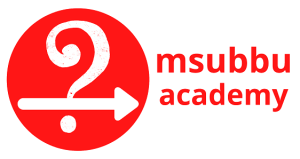TD-Class-1-Summary
15-May-2025
Basic Concepts
Quick Recap
The instructor emphasized the importance of staying up-to-date with course material and taking tests, while also sharing personal experiences and outlining the plan for covering thermodynamics topics. The discussion covered various thermodynamic processes, including work calculations, reversible adiabatic processes, and the characteristics of a gas system in a piston-cylinder assembly. The group also discussed upcoming sessions, peer discussions, and the importance of active participation and practical knowledge in their studies.
Next Steps
- All attendees to take the thermodynamics pre-assessment test posted by MSubbu.
- All attendees to finish studying the topics covered so far and come prepared for the next class.
- All attendees to spend at least 2 hours daily studying the course material.
- Everyone to prepare and discuss some problems from the textual-courses for the next peer discussion session.
- All attendees to participate actively in the next peer discussion session.
- Everyone to maintain a separate notebook for their notes.
SUMMARY
Staying Up-to-Date and Personal Growth: The instructor discusses the importance of taking tests and staying up-to-date with the course material. He encourages students to complete pending tests and come prepared for future classes. MSubbu shares his personal experience with a raw vegan diet and weight loss, offering to provide more information to interested students. He then outlines the plan for covering thermodynamics topics in the upcoming classes, emphasizing the subject's importance for other areas of study. The instructor also stresses the value of taking notes, tracking learning progress, and maintaining a positive attitude towards personal goals and activities.
Thermodynamics Basics and PVT Behavior: The discussion covers basic concepts in thermodynamics, including types of systems, processes, and the first law of thermodynamics. MSubbu explains work and heat calculations for closed and open systems, emphasizing the importance of understanding reversible processes. He also discusses the PVT behavior of pure components, including ideal gas equations and deviations from ideal behavior. The lecture concludes with an example problem involving the calculation of work done by a piston-cylinder system during sudden expansion.
Pressure and Volume in Reversible Process: In the meeting, MSubbu discussed the process of a system expanding and doing work against the surroundings. He explained the concept of pressure and volume in a reversible process and how the pressure of the system and surroundings can differ. MSubbu also discussed the sign convention for work done by the system and how it is calculated. He used the example of an ideal gas system to illustrate the connection between pressure and volume. The conversation ended with a discussion on the formula for work done by the system and the sign convention used in mechanical and chemical engineering contexts.
Thermodynamic Processes and Applicability Discussed: MSubbu discusses various thermodynamic processes and their applicability in different scenarios. He explains that reversible adiabatic processes are different from irreversible ones, and that certain equations are only applicable under specific conditions. MSubbu also mentions that he will be covering multiple problem types within this single explanation, including expansion against vacuum and reversible isothermal processes.
Work in Cyclic Processes Explained: MSubbu explains the calculation of work in two cyclic processes represented by triangular diagrams. He determines that both cycles involve 12 units of work but in opposite directions. The first cycle represents a heat engine that produces work, while the second cycle represents a refrigeration system or compressor that consumes work. MSubbu compares these processes to real-world applications such as heat engines and refrigerators, highlighting the difference in work direction between systems that deliver work and those that demand it.
Thermodynamics Work Calculation and Unit Conversion: MSubbu discusses a thermodynamics problem involving work calculation in a process where pressure and volume are linearly related. He explains how to approach the problem, emphasizing the importance of understanding the given information and using the correct equations. MSubbu also mentions the need for unit conversion and consistency when presenting the final answer. He encourages students to learn from this problem and refers them to additional resources, including his book collection and course materials available online.
Gas System Volume Change Discussion: The discussion focuses on the characteristics of a gas system in a piston-cylinder assembly. MSubbu explains that the system is initially at a higher temperature and pressure, and is allowed to cool to ambient temperature of 20°C, resulting in a volume change. He clarifies that the process is neither isochoric nor isothermal, and there is heat removal occurring as the system cools. MSubbu also mentions that the initial volume is twice the final volume, based on the piston's position relative to the stops.
The process begins with a constant pressure cooling phase as the piston descends, followed by a constant volume cooling phase once the piston hits a stopper. He details how to calculate the temperature and pressure changes using ideal gas equations, noting that the initial pressure of 150 kilopascals decreases to 130.61 kilopascals by the end of the process.
Thermodynamics Sessions and Peer Discussions: The group discusses the upcoming thermodynamics sessions and peer discussions. MSubbu encourages everyone to participate actively in discussions, emphasizing the importance of collective learning. He advises students to spend at least two hours daily on their studies to achieve their goal of ranking within the top 100 nationally. MSubbu also recommends gaining industry experience before pursuing higher studies or teaching careers, highlighting the value of practical knowledge. The session concludes with a brief discussion about Jeevitha's internship in microbial fuel cell research at Calicut.
